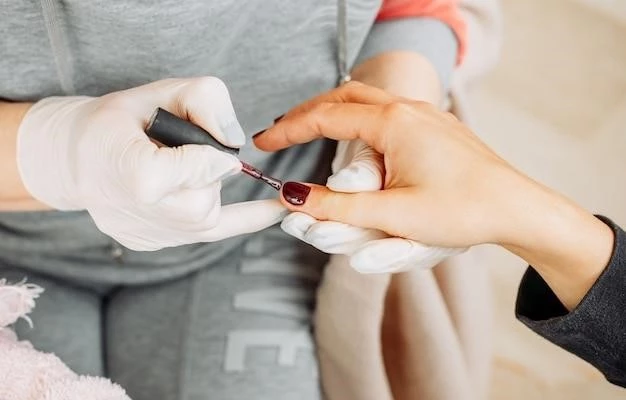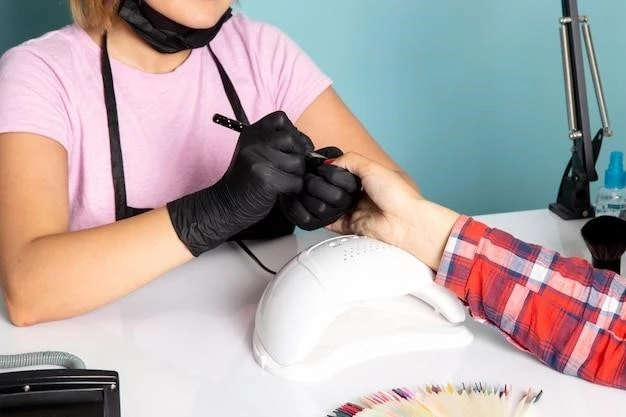Introduction
Onycholysis, also known as plummers nails, is a dermatological disorder characterized by the painless separation of the nail plate from the nail bed. It can be caused by various factors such as trauma, infections, or underlying health conditions.
Definition of Onycholysis
Onycholysis, also known as plummers nails, is a dermatological condition characterized by the spontaneous separation of the nail plate from the nail bed. It can present as a painless detachment starting at the distal free margin and progressing proximally. Various factors, such as trauma, infections, or underlying health conditions, can lead to this nail disorder.
Causes of Onycholysis
Onycholysis can be caused by various factors including trauma, chemicals, infections, inflammatory conditions, and systemic diseases. The separation of the nail plate from the nail bed may result from different causes such as external irritants, infections, or underlying health issues.
External Factors
Onycholysis, or the separation of the nail plate from the nail bed, can be triggered by various external factors such as trauma, exposure to chemicals, and the use of certain medications. Additionally, harsh irritants like detergents and soaps can contribute to the development of this nail condition.
Infections
Onycholysis can be induced by various infections, including fungal, bacterial, and viral agents. These infections can lead to the separation of the nail plate from the nail bed, resulting in onycholysis. Understanding the role of infections in causing this condition is crucial for effective management and treatment.
Underlying Health Conditions
Onycholysis, the separation of the nail plate from the nail bed, can be associated with various underlying health conditions such as psoriatic arthritis, hyperthyroidism, and systemic diseases. Understanding how these conditions contribute to onycholysis is crucial for effective management and treatment of the nail disorder.
Symptoms of Onycholysis
The symptoms of onycholysis include nail plate separation, color changes in the nails, and the painless nature of the condition. The detachment of the nail plate from the nail bed can lead to visible changes in the nails without causing any discomfort to the individual.
Nail Plate Separation
Nail plate separation, known as onycholysis, is a common symptom characterized by the detachment of the nail from the nail bed. This separation typically starts at the distal free margin of the nail and may progress proximally. Various factors such as trauma, infections, or underlying health conditions can lead to this condition.
Onycholysis, a condition where the nail plate separates from the nail bed, can lead to noticeable color changes in the nails. The separated part of the nail may appear cloudy and display white, yellow, or green discoloration. These color changes can indicate underlying causes such as injury, infection, medication reactions, or fungal involvement in the nail disorder.
Color Changes in Nails
Onycholysis, the separation of the nail plate from the nail bed, can lead to noticeable color changes in the nails. The separated part of the nail may appear cloudy and display white, yellow, or green discoloration. These color changes can indicate underlying causes such as injury, infection, medication reactions, or fungal involvement in the nail disorder.

Diagnosis of Onycholysis
Diagnosing onycholysis involves conducting a visual examination of the nails and may require additional diagnostic tests to identify the underlying cause accurately. Visual inspection can reveal the characteristic nail plate separation, while diagnostic tests help in determining the specific factors contributing to the condition.
Visual Examination
Diagnosing onycholysis often involves a visual examination of the nails to observe the characteristic separation of the nail plate from the nail bed. The visual inspection can provide valuable insights into the extent and appearance of the nail separation, aiding in the identification and assessment of this nail disorder.
Diagnosing onycholysis may involve specialized diagnostic tests to determine the specific underlying cause accurately. These tests can help healthcare providers identify factors such as infections, inflammatory conditions, or systemic diseases contributing to the separation of the nail plate from the nail bed.
Treatment Options
Management of onycholysis depends on the underlying cause and may include trauma-induced care, antifungal medications for fungal-induced cases, and preventive measures to promote nail health.
Diagnostic Tests
Diagnosis of onycholysis typically involves visual inspection, accompanied by specialized diagnostic tests such as fungal cultures, nail clippings for microscopy, and blood tests to identify potential infections or underlying health conditions contributing to the separation of the nail plate from the nail bed.
Antifungal Medications for Fungal-induced Onycholysis
When onycholysis is caused by fungal infections, treatment often involves the use of antifungal medications. These medications help target the underlying fungal pathogen responsible for the nail plate separation, aiding in the resolution of the fungal-induced onycholysis condition.
Preventive Measures
Preventive measures for onycholysis involve proper nail care practices, avoiding exposure to irritants, maintaining good hygiene, and addressing any underlying health conditions that may contribute to the condition. By following these preventive measures, individuals can promote nail health and reduce the risk of developing onycholysis.
Prognosis and Outcomes
Onycholysis typically has a favorable prognosis, with nails regrowing over time after addressing the underlying cause. The duration of onycholysis may vary, and the regrowth of nails can take several months to over a year, depending on individual factors.
Duration of Onycholysis
The duration of onycholysis can vary, with nails regrowing over time after addressing the underlying cause. The regrowth process may take several months to over a year, depending on individual factors and the specific triggers that led to the nail plate separation.
Regrowth of Nails
Following the resolution of onycholysis by addressing the underlying cause, nails typically regrow gradually over several months to a year. The regrowth process may vary in duration depending on individual factors and the specific triggers that led to the initial nail separation.
Complications of Onycholysis
Complications of onycholysis can include an increased risk of nail infections and discomfort or pain associated with the separation of the nail plate from the nail bed. Addressing the underlying causes and seeking appropriate treatment can help prevent complications and promote nail health.
Risk of Infection
Onycholysis can pose a risk of nail infections due to the separation of the nail plate from the nail bed, creating a potential entry point for microorganisms. It is essential to address the underlying causes promptly and seek appropriate treatment to reduce the risk of secondary infections associated with onycholysis.
Pain and Discomfort
Individuals with onycholysis may experience discomfort or pain associated with the separation of the nail plate from the nail bed. While onycholysis itself is typically painless, the underlying conditions or infections contributing to this nail disorder may cause discomfort or irritation. Proper diagnosis and treatment can help alleviate such symptoms associated with onycholysis.

Contagious Nature of Onycholysis
Onycholysis can be contagious if caused by fungal infections, as fungi can spread through direct or indirect contact. It’s important to take preventive measures to avoid spreading fungal-induced onycholysis to others.
Contagiousness in Fungal-induced Cases
When onycholysis is caused by fungal infections, there is a potential for contagiousness as fungi can spread through direct or indirect contact. It is crucial to take preventive measures and seek appropriate treatment to prevent the spread of fungal-induced onycholysis to others.
Prevention of Onycholysis
To prevent onycholysis, individuals can follow care tips for healthy nails and avoid risk factors that may contribute to nail plate separation. By maintaining good nail hygiene and addressing potential causes early, individuals can reduce the likelihood of developing onycholysis.
Care Tips for Healthy Nails
Proper nail care is essential to maintain healthy nails and prevent conditions like onycholysis. Basic care tips include keeping nails clean and dry, avoiding excessive exposure to water or chemicals, using moisturizers, and protecting nails from trauma or injury. Following these tips can help promote nail health and reduce the risk of developing onycholysis.
Avoiding Risk Factors
To prevent onycholysis, individuals should avoid risk factors such as repetitive trauma, prolonged exposure to water or chemicals, and tight-fitting shoes that can contribute to nail plate separation. By being mindful of these risk factors and taking preventive actions, individuals can reduce the likelihood of developing onycholysis.
Real-life Case Studies
Instances of onycholysis in clinical settings provide valuable insights into the presentation, causes, and management of this nail disorder. Understanding real-life cases, such as a 38-year-old man with onycholysis associated with hyperthyroidism, helps healthcare providers enhance their knowledge and treatment strategies for individuals affected by nail plate separation.
Instances of Onycholysis in Clinical Settings
Real-life cases of onycholysis in clinical settings provide valuable insights into the causes, presentations, and management strategies of this nail disorder. By examining specific cases, healthcare practitioners can enhance their understanding of onycholysis and tailor treatment approaches to individual patients effectively.
Impact of Underlying Health Conditions
Onycholysis can be associated with underlying health conditions such as psoriatic arthritis, hyperthyroidism, and systemic diseases. The presence of these conditions can impact the development, progression, and management of onycholysis, highlighting the importance of addressing the underlying health issues in individuals experiencing nail plate separation.
Recent Research and Future Directions
Advancements in understanding onycholysis have led to improved diagnostic techniques and treatment strategies. Research is focusing on exploring potential novel therapies and identifying biomarkers for accurate diagnosis. Future investigations may delve into personalized treatment approaches based on individual risk factors and genetic predispositions.
Advancements in Understanding Onycholysis
Recent research has led to significant advancements in understanding onycholysis, improving diagnostic accuracy and treatment efficacy. Emerging studies focus on the exploration of novel therapies and potential biomarkers for precise diagnosis. Future research directions may involve personalized treatment strategies based on individual risk factors and genetic predispositions, enhancing the overall management of onycholysis.
Potential Areas for Further Investigation
Future research on onycholysis may explore the role of genetic predispositions in nail plate separation and the development of personalized treatment approaches. Investigating new diagnostic markers and treatment modalities can enhance the understanding and management of onycholysis, paving the way for more tailored and effective interventions in the future.
